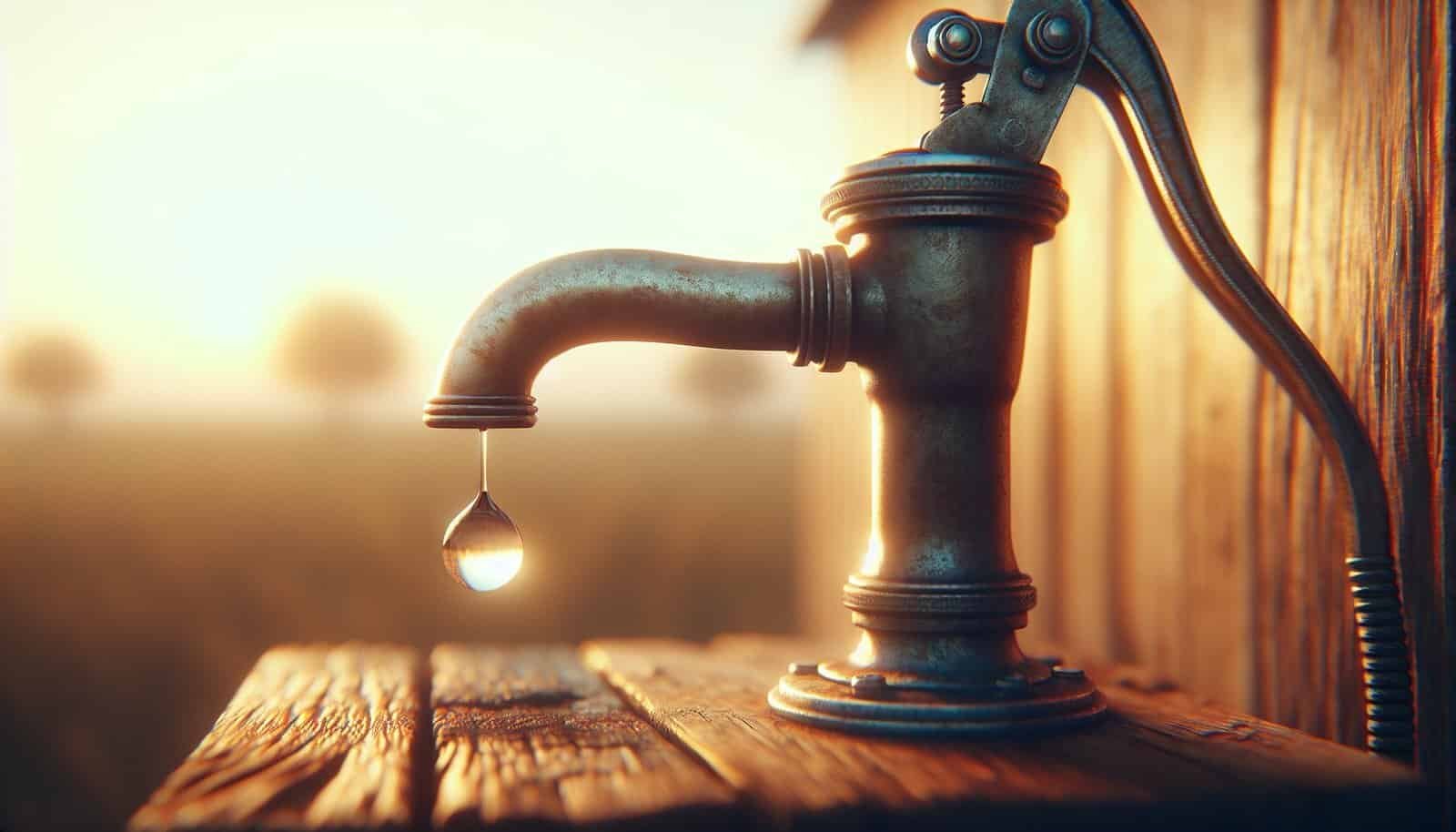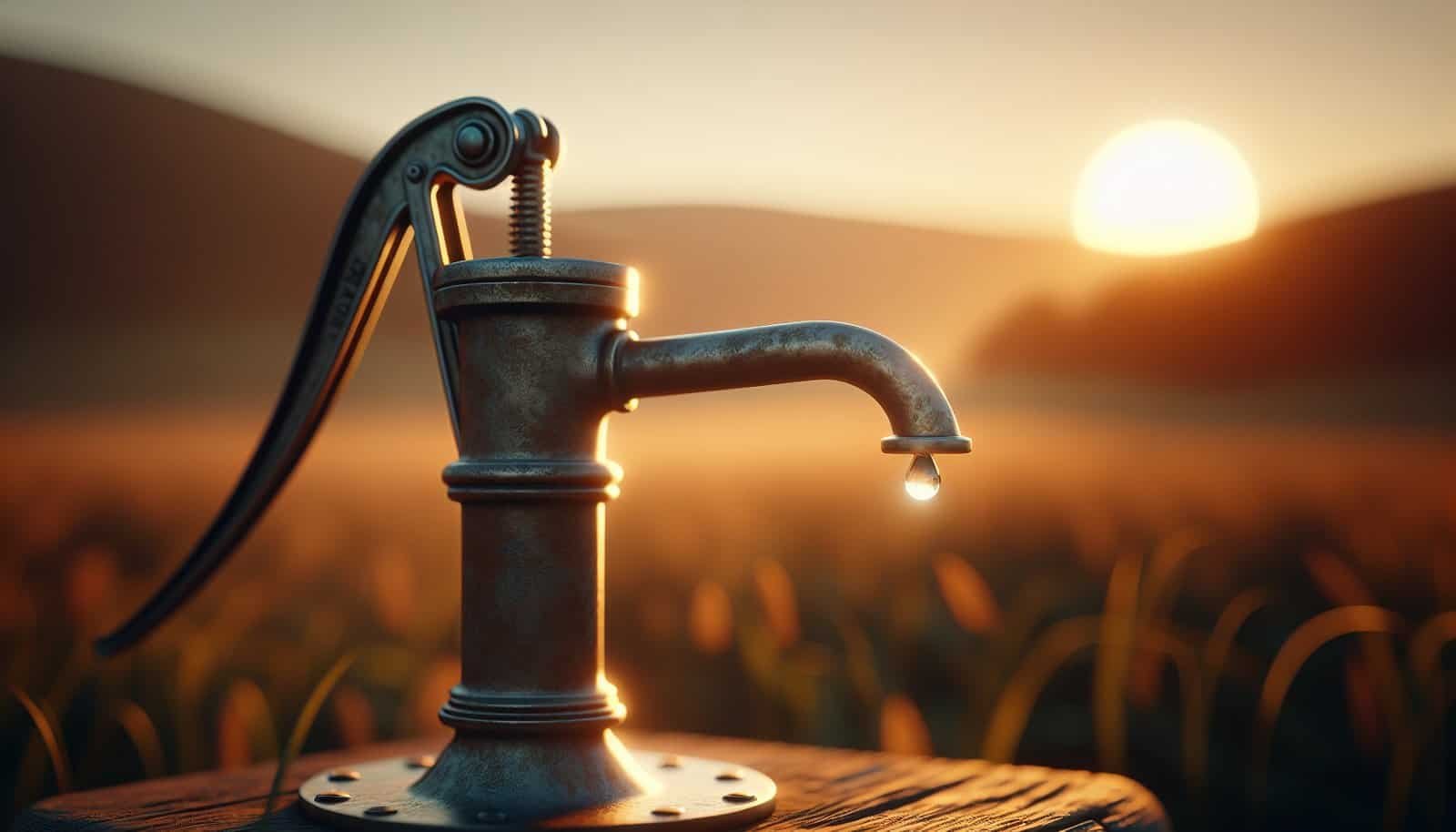Have you ever considered how owning a private water well could benefit you and your household?

What Are The Benefits Of Owning A Private Water Well?
Owning a private water well can change the way you think about your water supply, costs, and independence. This section gives a brief overview of why people choose wells and what general benefits you might expect.
Wells provide a direct source of groundwater to your property, often reducing reliance on municipal systems. They can offer cost savings, better control over water quality, and increased property value when properly maintained.
Why people choose private wells
People choose private wells for many reasons: cost savings over time, access to water in remote locations, and the ability to manage water quality personally. You might also prefer the security of not being tied to a municipal supply.
Considering your lifestyle, property size, and long-term plans will help you decide whether a well makes sense for you. In many rural or semi-rural areas, a well is simply the most practical way to get dependable water.
Types of Private Water Wells
There are several common well types, each with different installation needs, performance characteristics, and costs.
Dug wells
Dug wells are shallow and created with hand tools or machinery. They’re usually lined with stone, brick, or concrete.
These wells are simple but can be more vulnerable to contamination and seasonal fluctuations. They’re typically less expensive initially but require careful protection and maintenance.
Driven wells
Driven wells use a small-diameter pipe driven into the ground, often in areas with loose soil. They’re shallow and quick to install.
If you live where the water table is high, a driven well can be a cost-effective option. However, they’re not suitable for deeper water sources and can be more susceptible to contamination than properly cased drilled wells.
Drilled wells
Drilled wells are the most common modern option, reaching deep aquifers with steel casing and a pump system. They’re installed using rotary or percussion drilling rigs.
Though more expensive up front, drilled wells typically provide more reliable, cleaner water and greater depth, reducing the risk of contamination and drought-related issues.
Water quality and testing
Water quality is one of the most important aspects to consider when you own a private well. Regular testing helps you understand what’s in your water and what treatment may be needed.
You should test for bacteria, nitrates, pH, total dissolved solids, and local contaminants of concern like arsenic, lead, or radon. Testing frequency depends on your system and local conditions, but annual comprehensive testing is a common recommendation.
Common contaminants to watch for
Contaminants can come from natural geology, agricultural runoff, septic systems, and industrial sources. Knowing what to test for helps you keep your family safe.
Some contaminants are easily treated, while others may require more complex solutions. Understanding the risks in your area—such as radon in certain regions—guides appropriate testing and treatment.
How to get your water tested
You can collect a sample and send it to a certified laboratory, or use a local health department testing service. Many labs provide sampling kits and instructions to ensure accuracy.
Keep records of all tests, results, and treatments. This documentation is valuable for troubleshooting, resale, and regulatory compliance if needed.
Financial benefits and cost considerations
A private well can lead to long-term savings, but it involves upfront investment and recurring operating costs. This section outlines typical cost areas and how you might estimate your financial outcome.
When you own a well, you generally avoid monthly municipal water bills. Instead, you cover installation, pump operation, occasional repairs, and testing. Over many years, savings can offset installation costs, especially if water rates rise.
Upfront costs: drilling and installation
Drilling and installation costs vary widely by region, depth, geology, and local labor rates. Expect a drilled well to cost significantly more than a simple driven well.
Upfront costs include the drilling, casing, well cap, pump, pressure tank, and electrical work. Permitting and site preparation can add to the total. In many cases, a well installation ranges from a few thousand to tens of thousands of dollars.
Operating and maintenance costs
Operating costs include electricity for the pump and routine maintenance such as pump servicing, water testing, and occasional component replacements.
Budget for annual tests, periodic well disinfection, and a repair fund for unexpected issues like pump failure or casing damage. Keeping a maintenance schedule helps you avoid costly emergency repairs.
Long-term savings vs. municipal service
If municipal water bills are high, you may recoup your well investment more quickly. Consider projected water rate increases when calculating long-term savings.
You should also weigh non-monetary benefits like independence and property value increases when assessing the overall return on investment.

Independence and reliability
Owning a well gives you greater control over your water supply and can make you less vulnerable to municipal outages or service changes.
When power outages occur, wells with proper backup systems can continue to provide water, and you aren’t affected by municipal contamination events. However, independence requires you to be responsible for maintenance and planning.
Backup and redundancy options
You can add alternatives such as generator power for your pump or battery-backed systems to ensure water during outages. Redundancy reduces the risk of being without water.
Think about a backup plan that fits your routine and risk tolerance, including portable water storage, manual pumps, or alternative sourcing if a long outage occurs.
Environmental benefits
Private wells can have environmental advantages compared to municipal systems, but they also carry responsibility for protecting local aquifers.
A well can reduce energy consumption associated with long-distance water transport if your municipal supply travels far. Responsible well management—proper seal, avoidance of contaminant sources, and sustainable use—protects groundwater for you and neighbors.
Sustainable water use
Using water-efficient fixtures, monitoring usage, and avoiding over-pumping preserve your well and the local aquifer. You should be mindful of seasonal recharge rates and drought conditions.
If you rely on a shallow aquifer, your water level may drop in dry seasons, so conservative use helps maintain supply and extends well life.

Property value and resale considerations
A well can add value to your property, especially in areas where municipal water isn’t available or is expensive. Buyers often appreciate a reliable private water source.
That said, potential buyers may ask about testing history, maintenance records, and known issues. Clear documentation and recent testing reports make your property more attractive.
What buyers look for
Buyers typically want proof of proper installation, recent water test results, and evidence of regular maintenance. A well-maintained, documented system reduces perceived risk.
Providing manuals, service invoices, and water quality reports can streamline the sale and support a higher asking price.
Legal, regulatory, and permitting issues
Owning a private well doesn’t mean you’re free from rules. Local and state regulations often govern well construction, setbacks, and abandonment procedures.
Before drilling, check local permits and setback requirements from septic systems, property lines, and potential contamination sources. Noncompliance can lead to fines, forced remediation, or future liability.
Water rights and usage restrictions
In some regions, groundwater is subject to allocation systems or restrictions during droughts. Understanding local water rights ensures you use your well legally and sustainably.
Contact local water authorities or a county office to learn about any restrictions, reporting requirements, or conservation mandates that may affect your well.

Health and safety responsibilities
When you own a well, you are directly responsible for the safety of the water you and your family consume. This includes testing, treatment, and preventing contamination.
Proper wellhead protection, regular maintenance, and immediate testing after any contamination risk—like nearby flooding or chemical spills—are essential to protect health.
Preventing contamination
Keep potential contamination sources—chemicals, septic systems, livestock—well away from the wellhead. Ensure the well cap is secure and that surface water drains away from the site.
If contamination is suspected, you must act quickly: shut off suspect uses, test the water, and follow remediation procedures recommended by public health officials.
Treatment options for common problems
Depending on test results, you may need systems like disinfection (chlorination or UV), filtration for sediment, softening for hardness, or specialized treatment for arsenic or nitrate.
Selecting the right treatment system depends on contaminant type and concentration. Professional consultation helps match the solution to your water chemistry and household needs.
Maintenance responsibilities and schedules
A proactive maintenance plan keeps your well working efficiently and helps you spot problems before they become costly or hazardous.
Create and follow a maintenance schedule that includes annual testing, pressure tank checks, and pump inspections. Accurate records reduce downtime and support resale value.
Routine tasks you can do
You can safely check water clarity, pressure, and taste, and visually inspect the wellhead for damage or signs of tampering. Keep the area clear and properly graded.
Additionally, you should protect the well cap, ensure vents are unobstructed, and prevent surface water pooling near the well.
Professional maintenance tasks
Hire a licensed well contractor for pump servicing, deep inspections, and major repairs. Use professionals for electrics, pressure tank service, and decommissioning old wells.
Professional checks every few years help detect problems like casing failure, bacterial contamination, or pump inefficiency.

Typical cost ranges (table)
This table shows rough cost ranges for common well-related items. Costs vary significantly by region and site conditions; use this as a general guide.
| Item | Typical Cost Range (USD) | Notes |
|---|---|---|
| Drilled well installation (100–200 ft) | $3,000 – $15,000+ | Depends on depth, geology, and local rates |
| Shallow/driver well installation | $500 – $4,000 | Suitable only where water table is high |
| Pump and pressure tank | $500 – $3,000 | Includes installation; larger systems cost more |
| Water testing (basic panel) | $50 – $200 | Bacteria, nitrates, pH |
| Comprehensive testing | $150 – $600 | Includes heavy metals, organics, and specific contaminants |
| Well rehabilitation/jetting | $500 – $3,000 | When yield or quality declines |
| Well capping/abandonment | $300 – $2,000 | Proper closure to prevent contamination |
| Treatment systems (basic) | $300 – $5,000+ | Filters, softeners, UV, reverse osmosis, etc. |
Pros and cons (table)
A clear comparison helps you weigh the benefits and responsibilities of well ownership.
| Pros | Cons |
|---|---|
| Potential long-term savings on water bills | Upfront installation costs can be high |
| Greater control over water source and treatment | You are responsible for testing and maintenance |
| Independence from municipal supply interruptions | Possible seasonal variability or well depletion |
| Increased property value with documentation | Regulatory, permit, and potential legal obligations |
| Reduced reliance on long-distance water transport | Risk of contamination without proper protection |
Installation process overview
Understanding the major steps in well installation helps you plan and evaluate contractors. Each site is different, but the general process follows consistent stages.
Start with a site survey and testing, obtain necessary permits, choose an appropriate well location and drilling method, and then install the casing, pump, and electrical systems.
Site assessment and permitting
A professional will assess groundwater depth, geology, and potential contamination sources. You’ll need permits and to meet local setback requirements.
This stage may include a review of zoning, environmental restrictions, and access logistics for drilling equipment.
Drilling and well construction
Drillers install casing, seal the annulus, and complete the well to the required depth. The well is disinfected and tested after construction.
Proper sanitary sealing and a durable well cap are critical to prevent surface contamination.
Pump installation and startup
The pump, pressure tank, and controls are installed and connected to electrical service. The system is tested for pressure, flow, and safety.
After startup, you should have a baseline water quality test and documentation of well yield and operating parameters.
Troubleshooting common problems
Knowing common well issues helps you respond quickly and reduce downtime.
Common problems include low yield, pump failure, contaminated water, and pressure fluctuations. Early detection through testing and observation reduces repair costs.
Low yield or dry well
Low yield can result from seasonal drops in the water table, clogged intake screens, or reduced aquifer recharge. Pump adjustments, well rehabilitation, or drilling deeper may be needed.
Monitoring water levels and usage patterns helps you identify declining yield before it becomes a crisis.
Water smells, taste, or cloudiness
These signs often indicate bacterial contamination, organic material, or sediment. Immediate testing followed by appropriate treatment is necessary.
Temporary disinfection or filtration can address many issues, but persistent problems may require professional investigation.
Pump or pressure tank failures
Pumps can wear out, and pressure tanks can lose charge, causing cycling or no water. Regular checks and preventative maintenance extend equipment life.
Keep a small emergency fund for replacement parts or a backup pump to reduce the time you’re without water.
Long-term considerations and lifecycle
A well is an asset with a lifecycle: from installation to rehabilitation and eventual abandonment. Planning for each stage protects your investment and the environment.
Expect components like pumps and pressure tanks to need replacement over time. Well casings and seals can last many decades but should be inspected periodically.
When to rehabilitate or deepen a well
If water quality or yield declines, rehabilitation such as chlorination, jetting, or chemical treatment may restore performance. In some cases, deepening or drilling a replacement well is appropriate.
Evaluate cost-effectiveness: rehabilitation could be much cheaper than new construction, but it depends on the underlying issue.
Abandonment and legal closure
When a well is no longer in use, proper abandonment prevents it from becoming a contamination conduit. Local regulations usually specify the closure method.
Proper abandonment includes removing pumps, sealing the casing, and filling with approved materials to protect groundwater.
Financing and incentives
Financing options and incentives can make well ownership more affordable. Look for local programs, loans, or grants that support rural water infrastructure.
Some agricultural or rural development programs offer low-interest loans, tax incentives, or grants for well installation and water system upgrades. Investigate state and county resources.
How to finance a well
You can finance via home improvement loans, personal loans, or specialty rural development loans. Some contractors offer payment plans.
Compare interest rates and terms, and consider how long you expect to stay on the property when deciding on financing.
Frequently asked questions (FAQs)
You likely have practical questions about ownership, maintenance, and safety. This FAQ addresses common concerns in a concise way.
How often should I test my well water?
Test annually for bacteria and nitrates at minimum. Test more frequently if you have known risks, changes in taste/odor, or after major repairs or flooding.
What happens if my well is contaminated?
If tests show contamination, do not drink the water until it’s treated. Use bottled water or an alternative source. Work with public health officials and a licensed contractor to remediate the issue.
Can I connect a well to a house that already has municipal water?
Yes, many homeowners keep both connections for redundancy. Check local regulations and install an appropriate cross-connection prevention device to avoid contamination of the municipal supply.
Do wells affect landscaping and irrigation?
Wells can support irrigation, but large irrigation demands may reduce household water pressure or yield. Consider separate irrigation pumps and recharge limits if you plan heavy water use.
Selecting a well contractor
Choosing a reputable contractor is one of the most important steps in owning a well. Look for licensing, insurance, references, and transparent pricing.
Ask for documentation of experience with local geology and request references from recent customers. Verify licensing and check for complaints with local consumer protection agencies.
Questions to ask a potential contractor
Ask about experience drilling in your area, expected depth ranges, warranties, and who handles permits. Request a detailed written estimate and timeline.
Confirm who is responsible for site restoration, disposal of drilling fluids, and post-construction testing.
Final considerations and personal checklist
Owning a private well is rewarding but requires responsibility. A practical checklist helps you get started and maintain your system.
- Check local permitting and well construction codes
- Hire a licensed contractor with local experience
- Budget for installation, testing, and repairs
- Establish a testing and maintenance schedule
- Keep thorough records of all work and tests
- Plan for backup power or alternative water supplies
- Protect the wellhead and surrounding area from contamination
Conclusion
If you value independence, potential long-term savings, and control over your water source, a private water well can be a strong choice. It requires ongoing attention to testing, maintenance, and responsible use, but with proper care it delivers reliable water and can increase your property’s utility and value.
You’ll benefit most by learning about local groundwater conditions, choosing the right well type, keeping records, and staying proactive about maintenance and testing. With the right planning, a private well can be a safe, economical, and sustainable source of water for your home.
